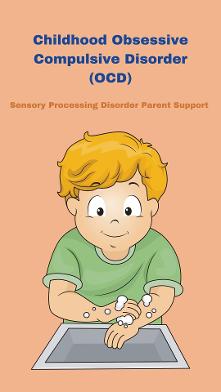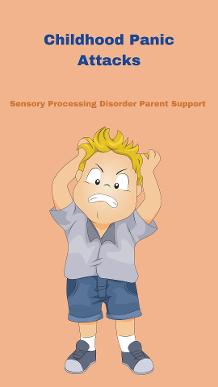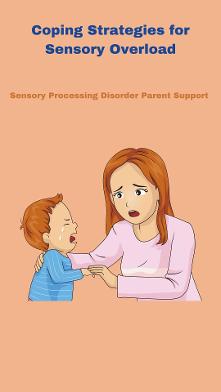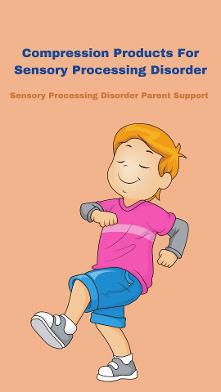What is a Sensory Diet for Sensory Processing Disorder?
I am asked what a sensory diet is often and most think that a sensory diet is what our children should eat and their food intake but its not about food at all.
It can be very common for children to experience sensory overload because we live in a very overwhelming world. It can be difficult to process sensory input and that can cause children to have sensory meltdowns, behavioral issues, anxiety and difficulty focusing.
A sensory diet are sensory activities to help a child with their sensory needs in different ways that are personalized to the child's sensory needs. A sensory diet can provide children with the sensory input they need to stay regulated.
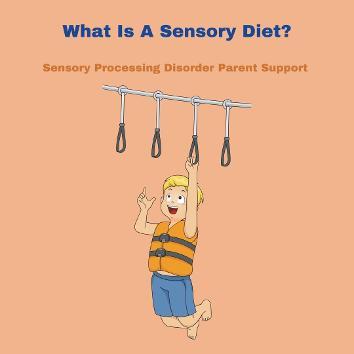
What is a Sensory Diet?
A sensory diet is a personalized plan of sensory activities each day that are scheduled to help children with sensory processing disorder (SPD) regulate their sensory input. It is not a food diet but can often be described as one only because it is providing the child's body with the nutrients of sensory input to help them function at their best. A sensory diet is usually created by an occupational therapist (OT) with the child's parents, teachers, and caregivers.
A sensory diet can help children with sensory processing disorder by providing them with the sensory input they need to regulate themselves. When we include sensory activities into our child's routine, they can better manage their sensory needs and learn to regulate themselves.
The main reason to have a sensory diet for your child is to help them maintain an optimal level of arousal, attention and engagement in the activities they do each day. It can help your child develop a more appropriate response to sensory stimuli, improve their self-regulation skills and promote better emotional and behavioral control.
Who Creates Sensory Diets?
Occupational therapists create a sensory diet and help parents implement their child's sensory diet. An occupational therapist will have the knowledge and training to assess a child's sensory needs and develop a plan to address that child's specific sensory needs that can be easily included in the child's daily routine.
Your child's occupational therapist will identify your child's sensory preferences and sensitivities during an assessment and consultation. Sensory diets can include a variety of sensory activities like heavy work activities, movement activities, deep pressure activities and sensory play.
Sensory Diet Activities & Sensory Processing Disorder Types Of Sensory Input
Visual activities that are looking at or observing objects like coloring, puzzles or playing with kaleidoscopes.
Auditory activities that are listening to or creating sounds like playing musical instruments, singing or listening to calming music.
Tactile activities that are touching or feeling objects like playing with playdough, finger painting or using a weighted blanket.
Vestibular activities that are movement and balance like swinging, jumping on a trampoline or doing yoga.
Proprioceptive activities that are the body's sense of position and movement like pushing or pulling heavy objects, carrying a backpack filled with books or doing push-ups.
Gustatory activities that are taste like eating crunchy or chewy foods or trying new flavors.
Olfactory activities that are smell like smelling different scents, like essential oils or flowers.
Interoceptive activities that are our internal sensations like yoga, breathing techniques, heavy work activities, feelings games or mindful activities.
Incorporating these activities into a child's routine each day can help them regulate their sensory input and improve their functioning.
Who Needs a Sensory Diet?
Sensory diets are usually for children with sensory processing disorder but they can also be beneficial for autistic children or children who have attention deficit hyperactivity disorder too. All children and adults who experience sensory overload or have difficulty regulating their emotions may benefit from a sensory diet.
When should a sensory diet be included in a child's schedule?
A sensory diet should start when your child wakes up in the morning and until they go to bed. This will help them stay regulated all throughout the day. The more we follow a sensory diet, the more regulated our kids will be and the less they will be overwhelmed and have sensory meltdowns.
Sensory diet activities for your child's sensory diet should be every 90 min to 2 hours. These sensory activities are like food for your child but it is feeding their sensory diet needs. A sensory diet should also be included when your child is at school too.
Children should have sensory activities included in their sensory diet throughout the day to help them stay focused and keep them regulated in their classroom. Your child's occupational therapist can help you with which sensory activities would be best for your child when they are at school.
Every child is different and their sensory needs are different too. What works for one child will not always work for another child. Creating a sensory diet is not something a parent should or could do on their own without professional advice.
It is very important to see a pediatric occupational therapist who is trained and specializes in sensory processing disorder to create your child's sensory diet and monitor your child throughout the process as they may need to make some adjustments along the way.
A sensory diet helps children regulate their sensory needs and improve their over all functioning. With just the right help from an OT and close monitoring, a sensory diet can be very beneficial to a child who is struggling with sensory processing disorder.
Here are some more helpful Sensory Processing Disorder Resources
DISCLAIMER: I am not an Occupational Therapist. I am an adult who has Sensory Processing Disorder, a sensory parent and a Grandma. The information on this website is not medical advice and does not replace the information that your child's therapists gives you. These are just ideas and information that I have learned myself over the years of being a parent and an adult living with SPD. If you are concerned for your child, please always seek medical attention through a family doctor, pediatrician or therapist. This website is for suggestions and informational purposes only. Each child is different and what works for one child may not for another because all children have different needs. Please always consult with a professional.
Amazon offers a small commission on products sold through their affiliate links on my website. Each of your purchases through links on my website for Amazon affiliation links or sponsored links supports me but at no additional cost to you so thank you for your purchases. I appreciate it so much!
